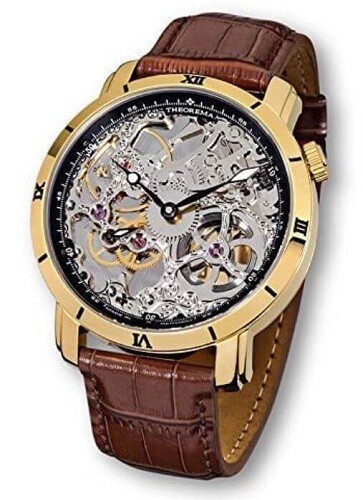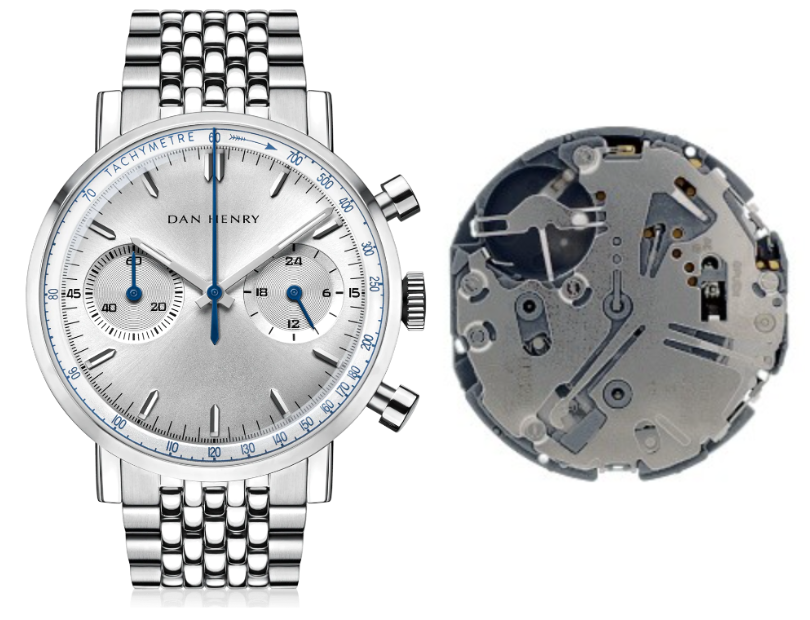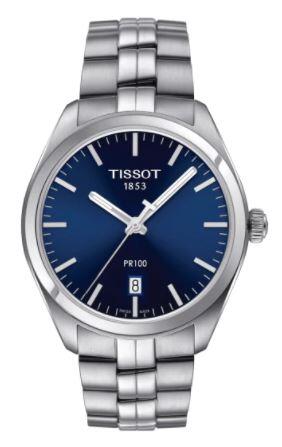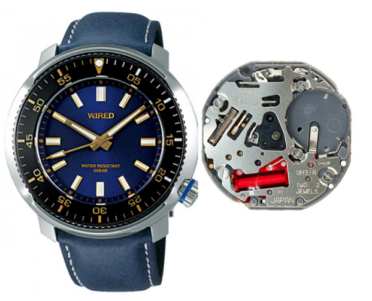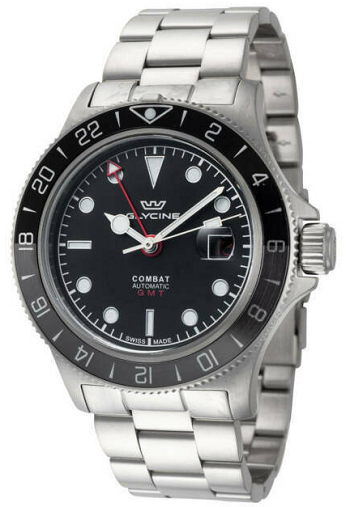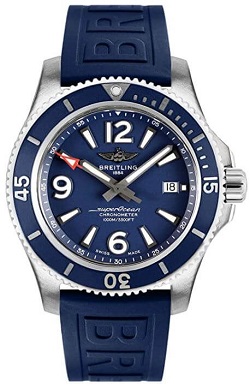Last Updated on September 18, 2023 by swisswatchreview
A watch is not just a timekeeping device. It is an engineering wonder that most of us get to wear on our wrists. However, not many people know how many decades of hard work actually stand behind these beauties.
You might have noticed that some watches tick, while the second hands on other timepieces look like they’re sweeping. But these movements are not just a fun and cool touch.
The chances are high that after reading this article, you would never be able to look at watches the same way you used to. That is because you are about to find out how much work and dedication goes into a single tick…
Sweep Vs Tick Watch – Which One Is Better?
It is impossible to say which type of watch is better as it definitely depends only on personal preferences. There are a few factors that make tick watches better than sweep watches and vice versa.
Sweep watches are, in general, more expensive than tick watches. That is because the internal mechanism of the former is more complicated than that of tick watches that feature a quartz movement. Many watch enthusiasts agree that quartz watches lack the technical craftsmanship of mechanical timepieces, but the majority of them are quite affordable.
So, if you’re looking for a watch that is going to emphasize your status and that is going to show other people that you value not only how the timepiece looks but also what’s happening inside, then a sweep watch might be a better option for you.
On the other hand, tick watches are perfect for those who value accuracy and convenience. Such a watch will lose only around 4 seconds per month, while a mechanical watch can end up losing 10 seconds per day. Furthermore, tick watches require minimal maintenance – all you would have to do is change the battery once every few years, and a mechanical watch needs to be winded once every 1-2 days.
In a nutshell, when choosing between a sweep and a tick watch, you might have to ultimately choose between convenience and status. That does not however mean that sweep watches are inaccurate and that there are no luxurious tick watches available on the market.
Watches With A Sweeping Second Hand – How Do They Work?
Sweep watches have a second hand that moves smoothly around the dial. Well, at least that’s what we see.
But the truth is that sweep watches tick just like any other timepiece. The trick here is that they do that a few times per second, and that’s what makes us think that the hand is gliding instead of ticking.
What Is A Watch’s Frequency?
The absolute majority of the timepieces that sweep are mechanical. But not all of the watches are going to be equally smooth. In fact, it all depends on the beat rate of the piece – the higher it is, the smoother the sweeping motion.
The beat rate or the frequency of the timepiece is determined by the total number of oscillations the combined hairspring and balance wheel perform. The mainspring gradually shares the housed energy with the gear train which then transfers the energy to the balance wheel. With each beat of the balance, the pallet fork locks and then unlocks the escape wheel.
The kinetic energy created by this mechanism is what drives the seconds hand.
You can use either the movement’s total Herz or the exact number of beats per hour to describe the watch’s frequency. The timepiece that operates at 4 Hz (or at 4 oscillations per second) makes 8 beats per second. A beat is counted when the hand moves in a single direction, while an oscillation is counted only once the hand moves and returns to its original position.
To find the beats-per-hour rate, you would simply have to multiply 8 beats per the number of seconds in an hour. This means that a 4 Hz watch has a 28,800 bph rate.
Some watches might have a 21,600 bph rate which means that they’ll be making 6 beats per second, while other watches might have a frequency of 28,800 bph and higher. The most impressive mechanical watches have a frequency of 10 and even 20 beats per second, and they are smooth as butter.
By the way, quartz watches can have a sweeping second hand as well, but such timepieces are quite rare.
What Is The Smoothest Sweep Watch Available?
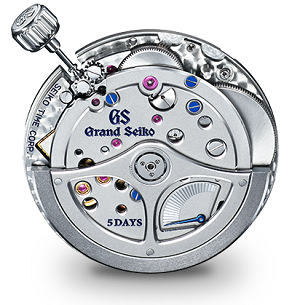
The Seiko Spring Drive has, perhaps, the smoothest sweeping hand on a watch. This engineering marvel combines mechanical movement with modern-day quartz technology (there is no battery though, only a quartz oscillator and an integrated circuit).
Even though the flying rotor spins at ‘only’ 8 rotations per second, the craftsmen managed to achieve the perfect sweeping movement. That is due to the fact that there is no escapement in the movement and the timepiece is driven by a continuous spinning wheel.
What Are Sweep Watches Used For?
The majority of people might simply assume that sweeping watches look ‘cooler’, but the truth is that such timepieces are also more practical than the watches that tick once per second.
Long before smartphones were created, these watches were used anywhere precise timekeeping was required. That is because with such timepieces can count the time down to a split second.
Nurses, for example, would use sweep watches to take pulses and in the military, mechanical timepieces were used to precisely coordinate attacks. Sweep watches also came in handy in sports where judges needed to count swim laps, time races, and so on.
Do All Automatic Watches Sweep?
Some experts like to agree that only the seconds hand on the Seiko Spring Drive really does ‘sweep’, while the majority of hands on other automatic watches still tick (though, a human eye might be tricked into thinking that the hand is moving smoothly).
But, in general, it is considered that practically all automatic watches sweep.
With that being said, there are a few slow runners or ‘dead seconds’ hand watches available for the true watch nerds.
Antoine Martin’s Slow Runner, for example, has a huge balance wheel that operates at 1 Hz. The craftsman slowed down the movement of this mechanic watch to just one beat per second which is truly fascinating.
Watches That Tick – How Do They Work?
Though both quartz and automatic watches tick, people are used to calling the latter ‘sweep watches’, while the timepieces with a quartz mechanism are considered to be ‘tick watches’. This means that the seconds hand on a quartz watch would move once every second.
To understand why exactly that happens, we would have to look inside the timepiece’s mechanism.
The power source of a quartz watch is a battery that is activated as part of a circuit. The battery sends an electrical charge to the integrated circuit which passes a signal to the quartz crystal (hence the name of such watches).
The crystal starts vibrating at 32,768 times per second – this consistent vibration is exactly what it used to drive the stepper motor which moves the hands and causes the seconds hand to tick.
As the lifespan of the battery is limited, watchmakers had to find a way to make this power supply last for as long as possible. A continuously moving mechanism would drain the battery in a matter of days, but if only one impulse gets delivered to the hands in a second, then the lifespan of the power source would considerably increase.
Sweeping Vs Tick Accuracy – A Complete Guide
Even though sweeping watches might be more accurate when it comes to timekeeping a race, for example, tick or quartz watches are, overall, the winners when it comes to accuracy.
That is mainly because quartz timepieces are powered by a battery. So, you wouldn’t have to worry about winding – all you would have to do is change the battery every 2 years or so. Overall, a quartz watch might end up losing only 4-10 seconds per month.
Mechanical watches, however, are powered by a mainspring, and to keep the timepiece accurate, you would have to wind it once every 1-2 days which already makes these watches less accurate. All in all, mechanical watches might lose or gain about 12 seconds per day. The same goes for automatic watches that feature self-winding mechanisms which take advantage of the wrist’s movement.
About High Accuracy Watches
Though plenty of watch enthusiasts tend to hate quartz watches for their ‘absence of soul’, tick watches have been recently gaining popularity even among the biggest snobs as only quartz watches can become high-accuracy watches. High-end quartz, as manufacturers like to call such timepieces, is a separate category that includes those watches that are specified to +-10 seconds per year.
Just like mechanical oscillators, quartz ones are susceptible to frequency drift. And in a lot of cases, temperature fluctuations are to blame. That’s why the most accurate quartz timepieces always have some form of thermocompensation which allows them to maintain a stable rate.
The most accurate watch available on the market is the remarkable Citizen Caliber 0100 which operates at 8.4MHz and drifts only about +-1 second per year.
The Japanese craftsmen are great at keeping their secrets, so we don’t know for sure what allowed them to achieve this level of accuracy. But they did mention that the shape of the quartz crystal used for the Caliber 0100 is totally different from the shape used in other watches.
Final Thoughts
The truth is that it doesn’t really matter whether you’re going to choose a sweep or a tick watch (or both). Any timepiece is a true testament to both craftsmanship and innovation, so you can’t really go wrong.
And the next time you see a seconds hand ticking or sweeping, you’ll know exactly how amazing the mechanisms that move these hands are.

